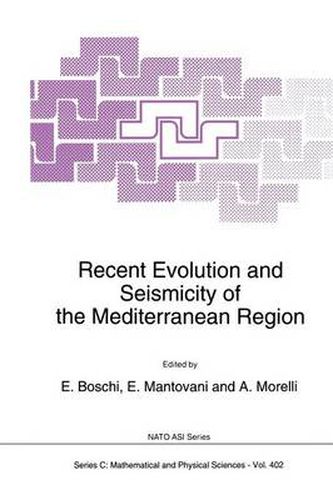Readings Newsletter
Become a Readings Member to make your shopping experience even easier.
Sign in or sign up for free!
You’re not far away from qualifying for FREE standard shipping within Australia
You’ve qualified for FREE standard shipping within Australia
The cart is loading…






This title is printed to order. This book may have been self-published. If so, we cannot guarantee the quality of the content. In the main most books will have gone through the editing process however some may not. We therefore suggest that you be aware of this before ordering this book. If in doubt check either the author or publisher’s details as we are unable to accept any returns unless they are faulty. Please contact us if you have any questions.
The Mediterranean is one of the most studied regions of the world. In spite of this, a considerable spread of opinions exists about the geodynamic evolution and the present tectonic setting of this zone. The difficulty in recognizing the driving mechanisms of deformation is due to a large extent to the complex distribution in space and time of tectonic events, to the high number of parameters involved in this problem and to the scarce possibility of carrying out quantitative estimates of the deformation implied by the various geodynamic hypotheses. However, we think that a great deal of the present ambiguity could be removed if there were more frequent and open discussions among the scientists who are working on this problem. The meeting ofERICE was organized to provide an opportunity in this sense. In making this effort, we were prompted by the conviction that each step towards the understanding of the Mediterranean evolution is of basic importance both for its scientific consequences and for the possibleimplicationsfor society. It is well known, for instance, that the knowledge ofongoing tectonic processes in a given region and of their connection with seismic activity may lead to the recognition of middle long term precursors of strong earthquakes. The few cases of tentative earthquake prediction in the world occurred where information on large scale seismotectonic behavior was available. This led to identify the zones prone to dangerous shocks, where observations of short-term earthquake precursors were then concentrated.
$9.00 standard shipping within Australia
FREE standard shipping within Australia for orders over $100.00
Express & International shipping calculated at checkout
This title is printed to order. This book may have been self-published. If so, we cannot guarantee the quality of the content. In the main most books will have gone through the editing process however some may not. We therefore suggest that you be aware of this before ordering this book. If in doubt check either the author or publisher’s details as we are unable to accept any returns unless they are faulty. Please contact us if you have any questions.
The Mediterranean is one of the most studied regions of the world. In spite of this, a considerable spread of opinions exists about the geodynamic evolution and the present tectonic setting of this zone. The difficulty in recognizing the driving mechanisms of deformation is due to a large extent to the complex distribution in space and time of tectonic events, to the high number of parameters involved in this problem and to the scarce possibility of carrying out quantitative estimates of the deformation implied by the various geodynamic hypotheses. However, we think that a great deal of the present ambiguity could be removed if there were more frequent and open discussions among the scientists who are working on this problem. The meeting ofERICE was organized to provide an opportunity in this sense. In making this effort, we were prompted by the conviction that each step towards the understanding of the Mediterranean evolution is of basic importance both for its scientific consequences and for the possibleimplicationsfor society. It is well known, for instance, that the knowledge ofongoing tectonic processes in a given region and of their connection with seismic activity may lead to the recognition of middle long term precursors of strong earthquakes. The few cases of tentative earthquake prediction in the world occurred where information on large scale seismotectonic behavior was available. This led to identify the zones prone to dangerous shocks, where observations of short-term earthquake precursors were then concentrated.